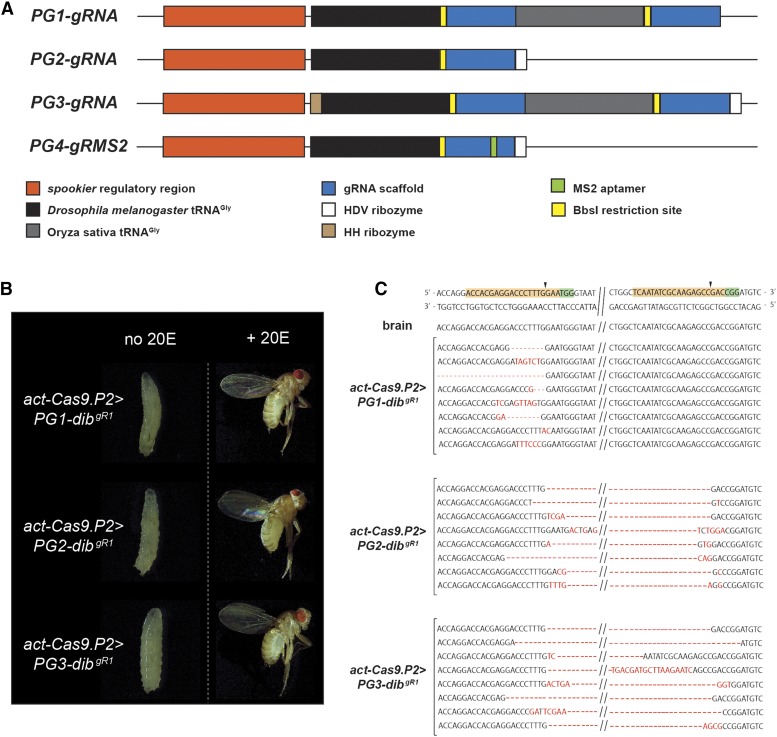Figure 9.
PG-specific gRNA in combination with ubiquitous Cas9 expression. A. Schematic illustration of PG-gRNA constructs that allow for prothoracic gland-specific expression of multiple gRNAs in a single vector, which are based on the commonly used pCFD5 plasmid where we replaced the pU6:3 promoter with the spok regulatory region. We also added sequences mediating hammerhead (HH) or Hepatitis delta virus (HDV) ribozyme function to promote proper processing of gRNAs from Pol II-derived mRNAs (Webb and Lupták 2011; Lee et al., 2016). Like the original pCFD5 plasmid, this vector series harbors two tRNAGly sequences that natively allow the insertion of two gRNAs, but additional gRNA-tRNA fragments can be added to target larger regions of DNA. PG1-3 are used for gene disruption, while PG4 (not tested in this study), which harbors an MS2 aptamer, is intended for gene activation in combination with fly lines that carry MCP_p65_hsf1 or MCP_VP64 transgenes (“flySAM”). B. Phenotypes associated with PG-specific gRNA- and ubiquitous Cas9-expression targeting the dib gene, in the absence (left) or presence (right) of dietary 20OH-ecdysone (20E). C. Sequences of dib locus resulting from using the same dib gRNA pair (gR1), but different PG-gRNA vectors (PG1-3). Red letters and dashes indicate altered or missing nucleotides.

